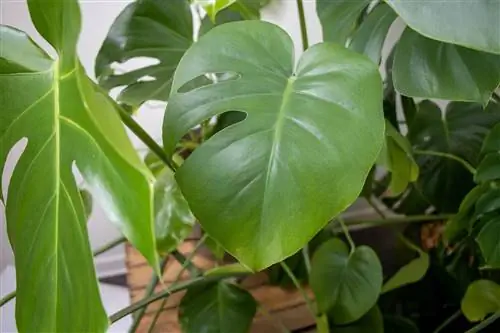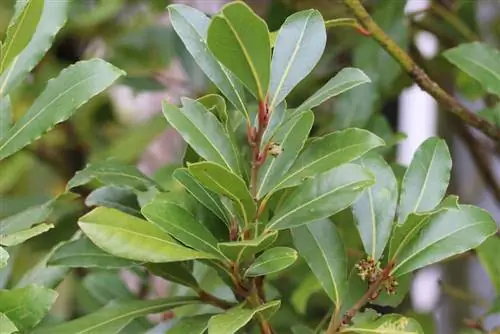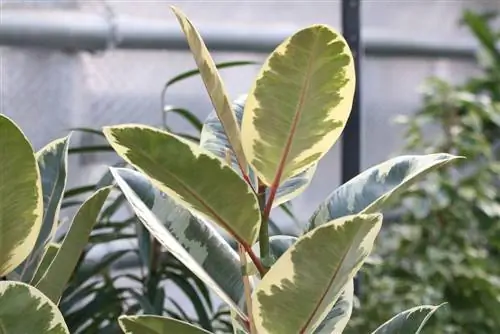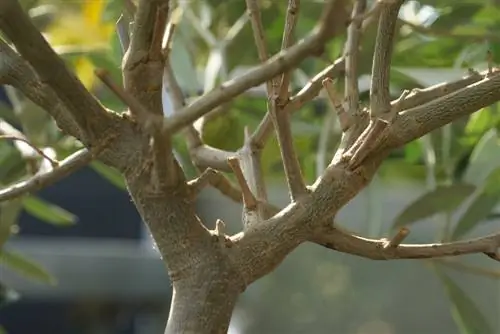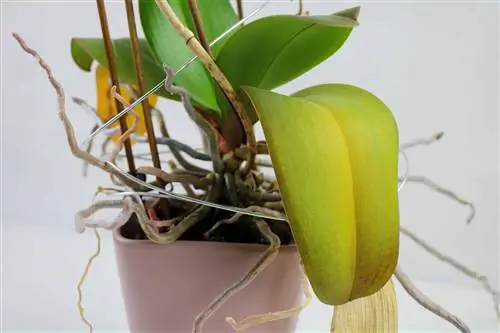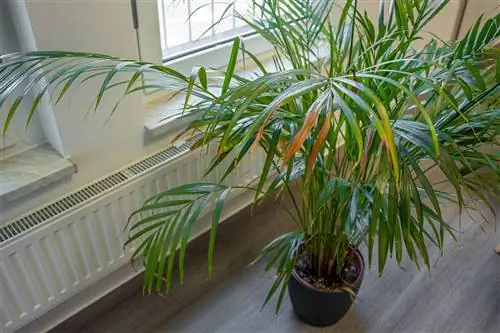- Author admin [email protected].
- Public 2023-12-17 03:39.
- Last modified 2025-01-24 12:45.
Their slotted leaves make the Monstera one of the most popular houseplants. But what could be the reason if it leaves the leaves hanging, and what can you do about it?
Most common causes
If the Monstera's leaves droop, there can be several reasons. As a rule, errors in care are responsible for this, such as:
- Unfavorable location conditions
- Water shortage or excess
- Overfertilization
- Error when repotting
- Pest Infestation
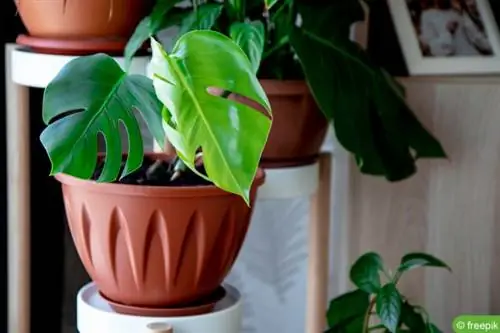
Appropriate countermeasures
There are various options and with timely countermeasures, the Monstera can be helped quickly.
Improve site conditions
If the Monstera is permanently too dark or too cool, the leaves will droop. It should not receive too much or too little light. Temperature problems mainly occur in the winter months. So what can you do?
- Place plant in better place
- bright location with indirect light
- Avoid direct sunlight
- wait about a week
- Monstera needs time to adapt
- Avoid cold drafts at the new location
- do not place near a radiator
- optimal temperatures between 18 and 29 degrees
Fix water shortage
The most common cause of drooping leaves is lack of water. Short-term dryness is usually not a problem, but if it is too dry for a long time, the leaves will quickly droop. Then you should remedy the situation as quickly as possible.
- Water Monstera immediately
- dried out substrate has difficulty absorbing water
- Give water little by little
- alternatively place Monstera in a container with water
- approx. Allow water to absorb for 30 minutes
- depending on the size of the pot, if necessary, water additionally from above
- drain excess water after diving

Tip:
Since the Monstera requires higher humidity, it is advisable to regularly wipe or rinse the leaves with a damp cloth.
Correcting overwatering
Too much moisture can also cause the Monstera leaves to droop. If the substrate is consistently too wet, the roots will rot and die. It is important to act quickly to save the plant.
- Stop watering immediately and let the substrate dry
- repot if the substrate is very wet
- remove old soil and rotten root parts
- Clean the pot thoroughly or use a new one
- Drainage made of gravel, expanded clay or pottery shards into the pot
- add some fresh earth
- Insert Monstera in the middle
- fill with soil, press down, do not water
Tip:
In winter, the Monstera should only be repotted in extreme emergencies, the risk that it will then incur is particularly high now.
Fix over-fertilization
The Monstera needs nutrients regularly. However, if you overdo it, it can cause significant damage. Over-fertilization can be recognized by hanging leaves and white residue on the substrate, which is deposited there due to s alts contained in the fertilizer. In case of over-fertilization you can do the following:
- flush out excess fertilizer
- to do this, rinse the substrate thoroughly with water
- for about five to ten minutes
- alternatively repot the plant in fresh soil
- fertilize again after eight weeks at the earliest
- adapt future fertilization to actual needs
- fertilize significantly less in winter and in dark locations
Repot professionally
Each repotting puts stress on the plant and can cause corresponding symptoms, especially if the plant was already weakened or its roots were damaged during the process. But what should you pay attention to?
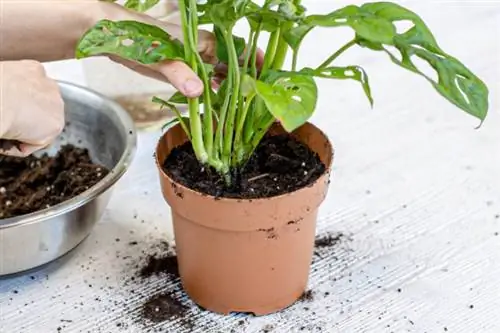
- Give the plant some time after repotting
- Roots recover, form anew
- new pot only a few centimeters larger than the old one
- use climbing aid for larger specimens
- Remove old soil from the edge of the pot before unpotting
- Carefully loosen roots growing from drainage holes from the ground
- Pull Monstera out of the pot at the bottom end of the trunk
- use loose, humus-rich soil when planting
Tip:
Newly purchased plants are often in pots that are much too small and should be repotted promptly after purchase. Otherwise, it is advisable to transplant every two to three years.
Remove pest infestations
If the leaves of the Monstera droop, this can also indicate an infestation with spider mites. You can recognize them by silvery dots on the leaves and fine spider webs on the undersides of the leaves. If there is an infestation, action should be taken as quickly as possible.

- isolate affected plant
- rinse thoroughly in the shower
- cover the substrate with foil beforehand
- Use sprays based on rapeseed or neem oil
- Use predatory mites as natural predators
- as a preventive measure, pay attention to a bright location with high humidity
Frequently asked questions
Which water should you use for watering?
It's best to water with rainwater. If only tap water is available, it should be stale for several days. Alternatively, distilled water can also be used.
How do you deal with aerial roots when repotting?
They should not be cut off. Some of them can be easily planted, which has a positive effect on the supply of water and nutrients.

